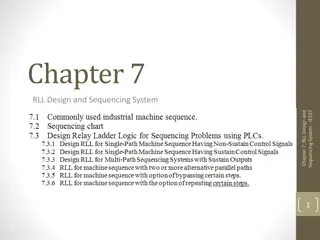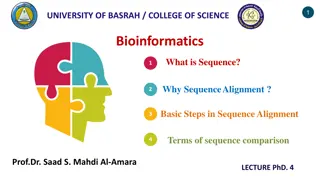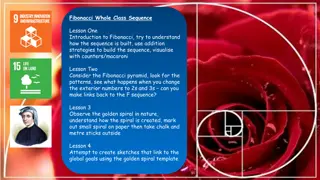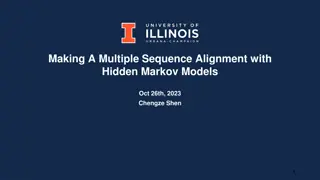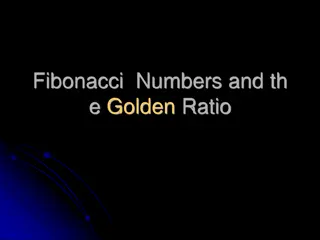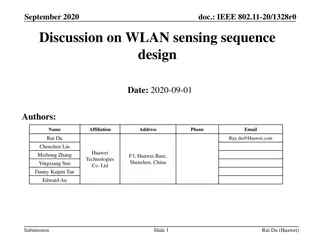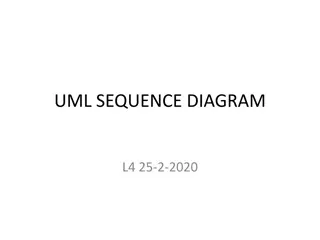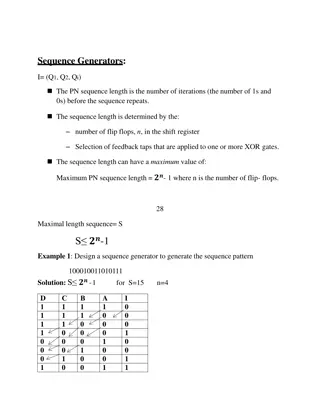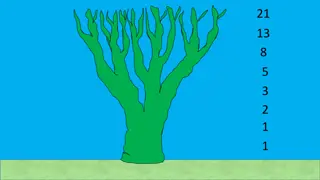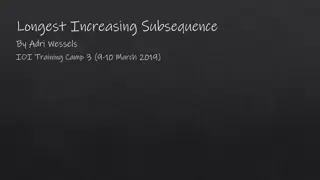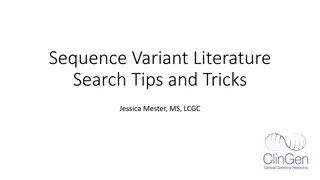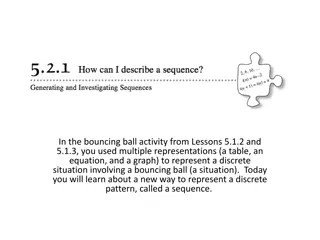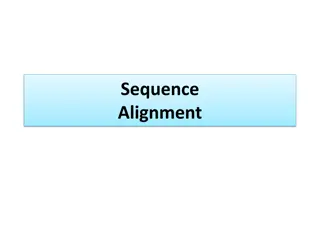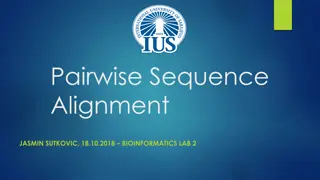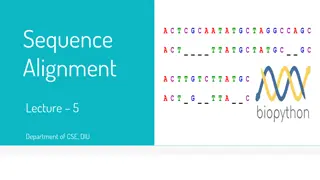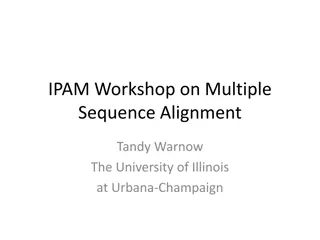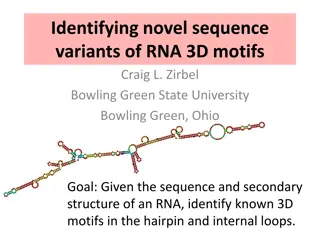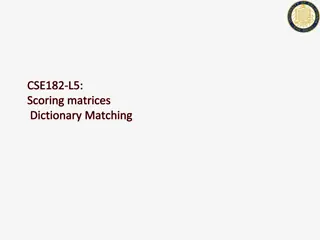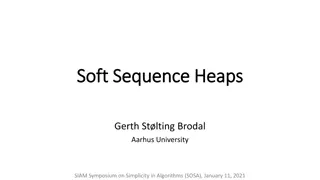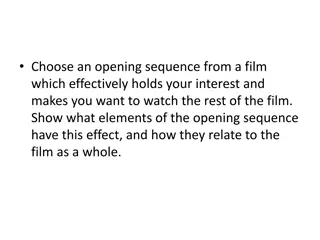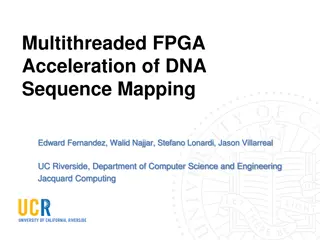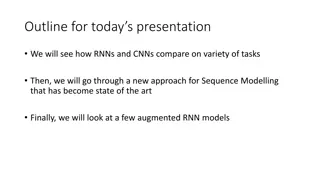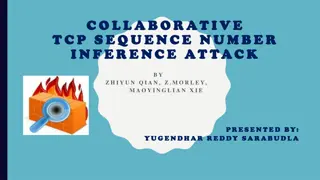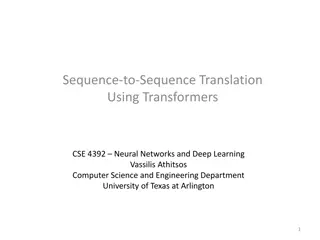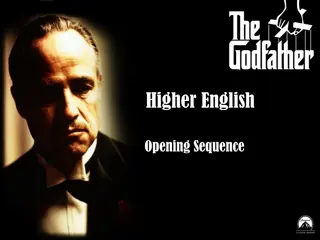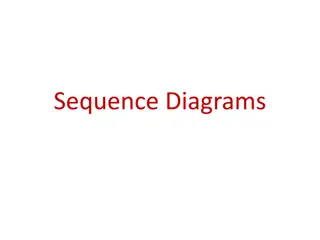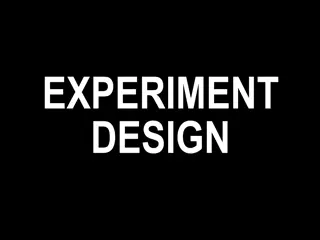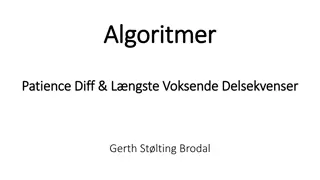Electric Vehicle Battery Market Size 2021 to 2028
The EV batteries market is expected to grow at a CAGR of ~26% from 2021 to reach $175.11 billion by 2028. This market is majorly driven by factors such as increasing adoption of EVs worldwide, decreasing battery prices, and increasing investment by leading automotive OEMs to secure the battery suppl
2 views • 5 slides
RLL Design and Sequencing System Overview
Common industrial sequences in RLL design and sequencing systems involve single path or multi-path approaches. Control signals can be sustain or non-sustain, impacting the system's memory. Sequence charts help visualize system operations, aiding in RLL design. Techniques like the CASCADE method are
14 views • 24 slides
Baking Ingredients Market Worth $27.2 Billion by 2030
Further, with the increasing urbanization, the demand for convenience food products is increasing rapidly, mainly due to changing lifestyles, the rising number of nuclear families, an increasing proportion of working women, and less time for food preparation. These factors create a strong case for t
2 views • 3 slides
Bioinformatics
Bioinformatics involves analyzing biological sequences through sequence alignment to uncover functional, structural, and evolutionary insights. This process helps in tasks like annotation of sequences, modeling protein structures, and analyzing gene expression experiments. Basic steps include compar
0 views • 6 slides
Unraveling the Fibonacci Sequence: Lessons in Mathematics & Nature
Join us on a journey through the enigmatic Fibonacci sequence with engaging lessons on its construction, exploration of mathematical patterns, observations of the golden spiral in nature, and creative activities linking to global goals. Discover the legacy of Fibonacci, the Italian mathematician, an
1 views • 17 slides
Multiple Sequence Alignment with Hidden Markov Models
Multiple Sequence Alignment (MSA) is essential for various biological analyses like phylogeny estimation and selection quantification. Profile Hidden Markov Models (HMMs) play a crucial role in achieving accurate alignments. This process involves aligning unaligned sequences to create alignments wit
0 views • 29 slides
Fibonacci Sequence and the Golden Ratio
Fibonacci numbers are a sequence of numbers starting with 0, 1, where each number is the sum of the two preceding numbers. This sequence, discovered by Leonardo Fibonacci, displays a fascinating relationship to the Golden Ratio when examining the ratios of consecutive numbers. The Golden Ratio, appr
2 views • 55 slides
Advanced Sequence Analysis with BioEdit Software
BioEdit Software is a versatile tool for sequence alignment and analysis, offering features like color customization, information-based shading, and integration with other programs like ClustalW and Blast. Through its intuitive and graphical interface, users can easily compare sequences, perform Clu
0 views • 12 slides
PCT Rule Amendments Effective from 1 July 2022
Key amendments to the PCT Regulations as of 1 July 2022 include changes to sequence listings, language requirements, additional mandatory qualifier values, and the handling of free text in applications. Rule adjustments also introduce the use of a new Standard Tool for standard-compliant sequence li
0 views • 4 slides
Discussion on WLAN Sensing Sequence Design in IEEE 802.11-20/1328r0
This presentation by Rui Du from Huawei discusses the design of sequences for WLAN sensing in IEEE 802.11 standards. It covers topics such as existing sequences, analysis of sequences, ambiguity functions, Golay sequences, and properties adopted for communication sequence design.
4 views • 14 slides
UML Sequence Diagrams and Their Applications
UML sequence diagrams depict how objects interact in a given scenario, showcasing messages sent between targets on lifelines. They are valuable for detailing use cases, modeling logic, task flow between components, and understanding process functionality. Objects, boundaries, controls, and stereotyp
1 views • 30 slides
Sequence Generators in Digital Circuits
Explore the concept of sequence generators in digital circuits, focusing on PN sequence lengths, feedback taps, XOR gates, and designing patterns with examples and visual aids, including Karnaugh maps.
1 views • 6 slides
Fibonacci Sequence, Bee Hives, and Squares in Nature
Discover the fascinating world of Fibonacci sequence through the lens of bees, sunflowers, and mathematical patterns in nature. Learn about the Fibonacci numbers, bee colonies, the beauty of sunflowers, and the mathematical properties of squares. Dive into the history of Leonardo of Pisa and his con
0 views • 16 slides
Longest Increasing Subsequence Problem and Solution
The Longest Increasing Subsequence problem involves finding a subsequence in a given sequence that is strictly increasing and of maximum length. The solution utilizes Dynamic Programming by maintaining arrays to store indices and track the longest increasing subsequence. By iterating over the list,
1 views • 32 slides
System Sequence Diagrams: Understanding Artifact for System Behavior
System Sequence Diagrams (SSDs) are vital artifacts that visually illustrate input and output events related to a system. They help define system behavior and interactions, making them essential during the logical design phase of software applications. By depicting events in sequential order, SSDs o
3 views • 24 slides
Effects of Cue-Do-Review Sequence on Teaching Assistant and Student Perceptions
This study explores the impact of the Cue-Do-Review sequence on teaching assistant and student perceptions of learning. The process involves TAs completing surveys, professional development sessions, implementing the sequence, and final surveys. Results show changes in perceptions before and after i
0 views • 12 slides
Enhancing Literature Search for Sequence Variant Analysis
Enhance your literature search skills for sequence variant analysis with tips on effective use of variant nomenclature, sources for finding articles for ACMG criteria application, and tools like HGMD, ClinVar, MasterMind, Google, and Google Scholar. Discover the importance of functional studies, cas
0 views • 21 slides
Shelby County Mandatory Pre-bid Meeting Presentation
This presentation showcases the proposed construction sequence for the mainline pavement section of the project in Shelby County. It includes detailed images and descriptions of various construction stages, such as the segments from W. McLemore Avenue to South of Crump Boulevard, the Crump/Roundabou
0 views • 65 slides
Sequence Patterns Using Different Representations
Samantha explores sequence patterns with a sequence-generating machine starting with 2 rabbits. She analyzes the pattern, predicts the next terms, and starts a new sequence with an initial value of 5. Join her in creating and organizing sequence families based on growth patterns, finding sequence ge
0 views • 6 slides
Sequence Alignment in Genetics
Sequence alignment is the comparison of DNA or protein sequences to highlight similarities, often indicating a common ancestral sequence. This process is essential in determining homology and functional similarities between sequences. Types of alignment include global and local alignment, with chall
0 views • 6 slides
Sequence Alignment and Tools in Bioinformatics
Explore the concepts of homology, orthologs, and paralogs in bioinformatics, along with different types of sequence alignment such as global, local, and semi-global. Learn about popular alignment tools like Blast and Fasta and how they are used for analyzing sequences. Dive into the world of NCBI an
0 views • 32 slides
Sequence Alignment Methods in Bioinformatics
Sequence alignment is crucial in bioinformatics for identifying similarities between DNA, RNA, or protein sequences. Methods like Pairwise Alignment and Multiple Sequence Alignment help in recognizing functional, structural, and evolutionary relationships among sequences. The Needleman-Wunsch algori
0 views • 18 slides
Challenges and Techniques in Multiple Sequence Alignment
Multiple Sequence Alignment (MSA) poses a significant challenge due to NP-hard problems, large datasets, and the lack of accuracy in current methods. Novel techniques are needed to address scalability and accuracy issues in MSA, which serves multiple purposes like phylogeny estimation and structure
1 views • 52 slides
EMBOSS Needle: Pairwise Sequence Alignment Tool
EMBOSS Needle is a pairwise sequence alignment tool that uses the Needleman-Wunsch algorithm to find the optimal global alignment between two input sequences. It is available online through EMBOSS and requires entering two protein/DNA sequences of the same length to generate alignment results, inclu
0 views • 11 slides
Evolution of Sequence Alignment: From Smith-Waterman to BLAST
Delve into the progression of sequence alignment algorithms, from the foundational Smith-Waterman method with its limitations to the efficient filtering strategy employed by BLAST. Discover the challenges faced and solutions adopted in aligning biological sequences for genomic analysis.
0 views • 30 slides
RNA 3D Motif Analysis: Novel Sequence Variants Identification
A research project at Bowling Green State University aims to identify 3D motifs in RNA hairpin and internal loops using sequence and secondary structure information. The study focuses on finding likely sequence variants of known motifs, leveraging geometric considerations and basepair isostericity f
0 views • 28 slides
Sequence Alignment and Scoring Matrices
In this content, we dive into the fundamentals of sequence alignment, Opt score computation, reconstructing alignments, local alignments, affine gap costs, space-saving measures, and scoring matrices for DNA and protein sequences. We explore the Smith-Waterman algorithm (SW) for local sequence align
0 views • 26 slides
Soft Heap and Soft Sequence Heaps: Properties and Applications
Explore the properties and applications of Soft Heap and Soft Sequence Heaps, discussing how corruption handling and selection functions are optimized in these data structures. The concept of car-pooling and the simplification of heap operations are highlighted, along with references to relevant res
1 views • 10 slides
Overview of Soft Sequence Heaps in Algorithms
Soft sequence heaps are a specialized data structure designed to handle corruptions in heap operations efficiently. This technology, introduced at Aarhus University, simplifies heap manipulation, particularly in car-pooling and other applications, with a focus on minimizing corruptions during extrac
0 views • 10 slides
Analyzing the Impact of Saving Private Ryan's Opening Sequence
The opening sequence of "Saving Private Ryan," directed by Steven Spielberg, effectively captures the audience's attention through intense scenes of war, sound effects, and emotional depth. This essay explores how these elements create a compelling narrative that urges viewers to continue watching,
0 views • 10 slides
FPGA Acceleration of DNA Sequence Mapping using Multithreaded Architectures
Introduction to the use of FPGA for hardware acceleration of multithreaded architectures targeting DNA sequence mapping, implementation of FHAST tool, FM-Index string matching algorithm, and evaluation of results.
0 views • 20 slides
RNNs and CNNs for Sequence Modelling: A Dive into Recent Trends and TCN Models
Today's presentation will delve into the comparison between RNNs and CNNs for various tasks, discuss a state-of-the-art approach for Sequence Modelling, and explore augmented RNN models. The discussion will include empirical evaluations, baseline model choices for tasks like text classification and
0 views • 20 slides
TCP Sequence Numbers and Attacks
Explore the fundamental concepts of TCP sequence numbers and inference attacks, along with the design, implementation, and impact analysis of TCP attacks. Delve into the significance of TCP fields, the three-way handshake process, as well as sequence and acknowledgment numbers to gain a comprehensiv
1 views • 35 slides
Transformer Neural Networks for Sequence-to-Sequence Translation
In the domain of neural networks, the Transformer architecture has revolutionized sequence-to-sequence translation tasks. This involves attention mechanisms, multi-head attention, transformer encoder layers, and positional embeddings to enhance the translation process. Additionally, Encoder-Decoder
0 views • 24 slides
Analysis of Key Elements in the Opening Sequence of "Higher English
The opening sequence of "Higher English" delves into the intricate themes of control, power, deception, and the clash between Italian tradition and American values. Through the characters and dialogues, the sequence explores concepts of justice, violence, crime, corruption, honor, family, and the Am
0 views • 23 slides
Sequence Diagrams in Software Development
Sequence diagrams depict the sequence of actions in a system, capturing the invocation of methods in objects. They are a valuable tool for representing dynamic system behavior. Message arrows in sequence diagrams indicate communications between objects, illustrating synchronous and asynchronous mess
0 views • 21 slides
Effective Strategies for Experiment Design in Statistics
In experimental design, it is crucial to accurately define variables, levels of data, and experiment type, while using appropriate controls and understanding data distribution. Reducing noise in results involves increasing the signal-to-noise ratio through techniques like repeated measurements, incr
0 views • 8 slides
Profile HMMs
Profile Hidden Markov Models (HMMs) are essential tools in sequence analysis. These models capture the complexity of sequence families and are based on dynamic programming algorithms. By building profiles from multiple sequence alignments, Profile HMMs provide a probability distribution of sequences
0 views • 43 slides
Algoritmer - Patience Diff. & Longest Increasing Subsequence
This content covers various algorithms including Patience Diff, Longest Increasing Subsequences, searching in sorted lists, and code snippets in C programming. It also touches on concepts like fibonacci sequence and factorial calculation. The images displayed showcase code examples and algorithmic c
0 views • 13 slides
Sequence Analysis Concepts
Delve into the important concepts of homology, sequence similarity, limits of alignment detection, and determining homology in sequence analysis. Learn about the twilight zone, database similarity searching, and sequence database searching. Explore the nuances of inferring homologous relationships a
0 views • 37 slides

